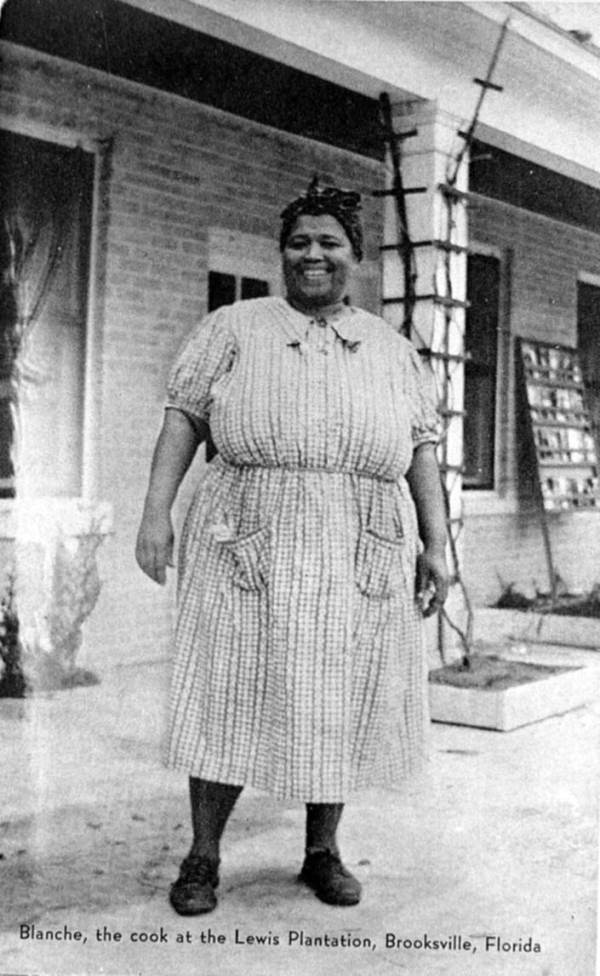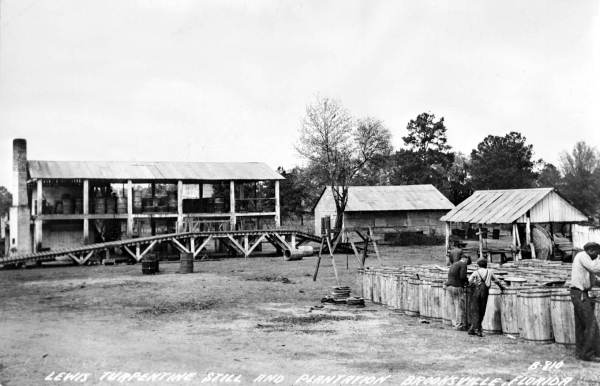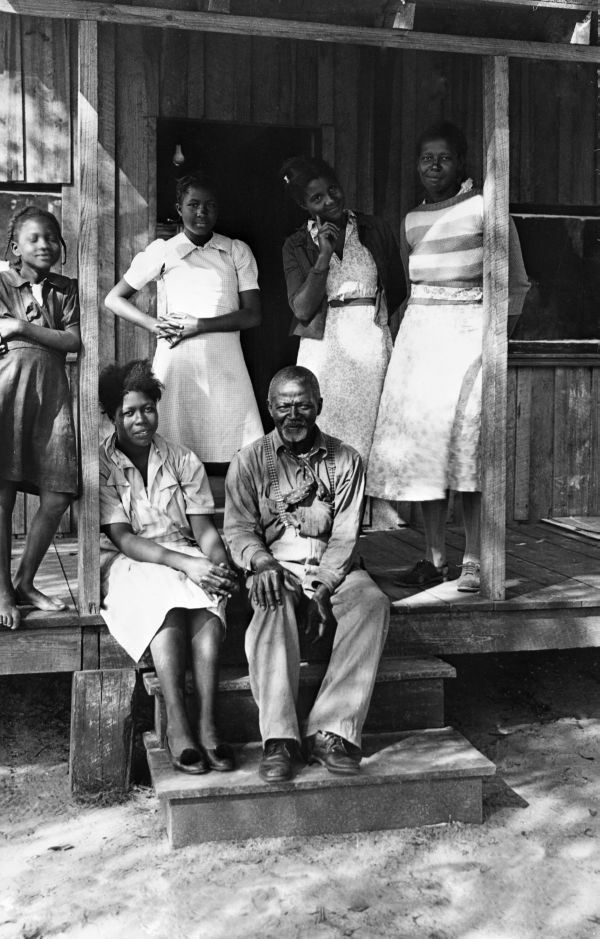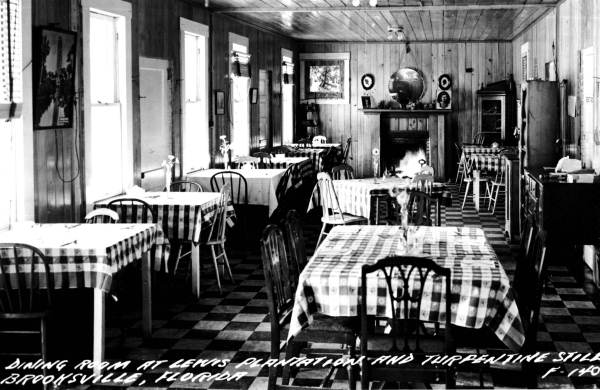Description of previous item
Description of next item
The Lewis Plantation
Published May 5, 2014 by Florida Memory
With summer on the way and the school year coming to a close for many districts, Floridians can expect an uptick in the number of tourists coming into the state to enjoy its many natural and man-made attractions. Over the years, Florida has been home to a wide variety of tourist attractions, some beautiful, some exotic, and some that would be quite shocking if they were around today.
The Lewis Plantation, a tourist stop just south of Brooksville on U.S. 41 in Hernando County, falls squarely into the last category. After operating for a number of years merely as one of Florida’s many turpentine distilleries, its owner, Pearce Lewis, hit upon a scheme in the 1930s to tap into the booming tourist industry. After making a few adjustments to the buildings and adding a few vintage objects, Lewis rebranded the distillery as an “authentic” antebellum plantation, and invited visitors to come see what life had been like in the South before slavery was abolished. So far, this may not sound too different from most other historic plantation sites and museums, but with the Lewis Plantation there was a twist. Because Lewis already had dozens of workers, mostly African-American, operating the turpentine distillery on the site, he decided to incorporate them into the tourist attraction, so that his employees doubled as reenactors of antebellum slavery.
For a nominal fee (fifteen cents in the early days) visitors to the Lewis Plantation could take a tour of the grounds in a mule-drawn wagon. Along the way, they could see the actual homes where the African-American employees lived, which were mostly without electricity or running water. Newspaper accounts of the tour commented cheerily on the quaintness of these scenes, noting how closely they resembled what life must have looked like in the slave quarters of the South’s antebellum plantations. Although it was something of an anachronism, the tour usually included a trip to the distillery, where the people who lived in these ramshackle houses carried out the tedious process of extracting turpentine from the sap of nearby stands of pine trees.
Along the way, the tour guide would often stop and have one of the African-American employees tell a story to the visitors. “Uncle Doug” Ambrose, born into slavery in 1860 just before the outbreak of the Civil War, was one of the more popular storytellers, and was at one time featured in the popular Ripley’s “Believe It or Not” column. The entertainment also sometimes included singing from some of the employees, some of whom were organized into a “harmony quartet.”

“Uncle Doug” Ambrose, born into slavery just before the Civil War, at the Lewis Plantation (circa 1940s).
The Lewis Plantation had other amenities, including overnight lodging and a restaurant called “The Plantation Kitchen.” Blanche, an African-American woman who did the cooking during most of the attraction’s lifetime, was described in advertisements as being the “personality” of the kitchen, dressed as a typical antebellum African-American “mammy.” In the souvenir shop nearby, visitors could purchase tradition plantation handicrafts, as well as “pine perfume” and miniature barrels of rosin, a by-product of the turpentine distillation process.

Blanche, the cook at “The Plantation Kitchen,” the restaurant located at the Lewis Plantation. Blanche is standing outside the main building that housed the restaurant and gift shop (circa 1940s).
Although the Lewis Plantation did very well for a number of years, its days were numbered as the tides of history continued to shift. The labor-intensive process of extracting turpentine from pine sap gave way to other methods, and the idea of reenacting slavery as a tourist attraction was increasingly disturbing to Floridians and visitors alike. By the 1960s, the Lewis Plantation had faded away. Some of the buildings still remain at the old site, although they are overgrown with weeds. Only a handful of postcards, placards, and photographs remain to remind us of the vibrant if somewhat unusual institution that once operated there.
Did you ever visit the Lewis Plantation? How about another “unusual” roadside tourist attraction in Florida? If so, we want to hear about it when you share this article on Facebook.
Cite This Article
Chicago Manual of Style
(17th Edition)Florida Memory. "The Lewis Plantation." Floridiana, 2014. https://www.floridamemory.com/items/show/295172.
MLA
(9th Edition)Florida Memory. "The Lewis Plantation." Floridiana, 2014, https://www.floridamemory.com/items/show/295172. Accessed December 16, 2025.
APA
(7th Edition)Florida Memory. (2014, May 5). The Lewis Plantation. Floridiana. Retrieved from https://www.floridamemory.com/items/show/295172

 Listen: The Blues Program
Listen: The Blues Program


